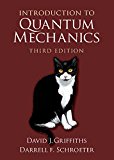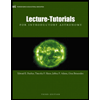
Applied Physics (11th Edition)
11th Edition
ISBN: 9780134159386
Author: Dale Ewen, Neill Schurter, Erik Gundersen
Publisher: PEARSON
expand_more
expand_more
format_list_bulleted
Textbook Question
Chapter A.4, Problem 19P
Find the values of a, b, and c, in each quadratic equation.
19. 5x2 + 6x = 0
Expert Solution & Answer
Want to see the full answer?
Check out a sample textbook solution
Students have asked these similar questions
Please answer #5, thanks!!! Don’t draw a FBD, not needed
How can I solve it ? Be clear please 2 significant digit
i need help to fill all 4 blanks please
Chapter A Solutions
Applied Physics (11th Edition)
Ch. A.1 - Perform the indicated operations. 1. (5)+(6)Ch. A.1 - Prob. 2PCh. A.1 - Prob. 3PCh. A.1 - (+5)+(+7)Ch. A.1 - (5)+(+3)Ch. A.1 - 0+(3)Ch. A.1 - (7)(3)Ch. A.1 - Prob. 8PCh. A.1 - (4)(+2)Ch. A.1 - Prob. 10P
Ch. A.1 - 0(+3)Ch. A.1 - 0(2)Ch. A.1 - Prob. 13PCh. A.1 - (+4)(+6)Ch. A.1 - (7)(+3)Ch. A.1 - (+5)(8)Ch. A.1 - (+6)(0)Ch. A.1 - (0)(4)Ch. A.1 - +36+12Ch. A.1 - 93Ch. A.1 - +162Ch. A.1 - Prob. 22PCh. A.1 - 0+6Ch. A.1 - 40Ch. A.1 - Prob. 25PCh. A.1 - Prob. 26PCh. A.1 - Perform the indicated operations. 27....Ch. A.1 - Perform the indicated operations. 28....Ch. A.1 - Perform the indicated operations. 29. (4)(+5)(4)Ch. A.1 - Perform the indicated operations. 30....Ch. A.1 - Perform the indicated operations. 31....Ch. A.1 - Perform the indicated operations. 32....Ch. A.1 - Perform the indicated operations. 33. (+5)+(2)(+7)Ch. A.1 - Perform the indicated operations. 34....Ch. A.1 - Perform the indicated operations. 35....Ch. A.1 - Perform the indicated operations. 36....Ch. A.1 - Perform the indicated operations. 37. (+3)(5)(+3)Ch. A.1 - Perform the indicated operations. 38....Ch. A.1 - Perform the indicated operations. 39....Ch. A.1 - Perform the indicated operations. 40....Ch. A.2 - Do as indicated. Express the results using...Ch. A.2 - Do as indicated. Express the results using...Ch. A.2 - Do as indicated. Express the results using...Ch. A.2 - Do as indicated. Express the results using...Ch. A.2 - Do as indicated. Express the results using...Ch. A.2 - Do as indicated. Express the results using...Ch. A.2 - Do as indicated. Express the results using...Ch. A.2 - Do as indicated. Express the results using...Ch. A.2 - Do as indicated. Express the results using...Ch. A.2 - Do as indicated. Express the results using...Ch. A.2 - Do as indicated. Express the results using...Ch. A.2 - Do as indicated. Express the results using...Ch. A.2 - Do as indicated. Express the results using...Ch. A.2 - Do as indicated. Express the results using...Ch. A.2 - Do as indicated. Express the results using...Ch. A.2 - Do as indicated. Express the results using...Ch. A.2 - Do as indicated. Express the results using...Ch. A.2 - Do as indicated. Express the results using...Ch. A.2 - Do as indicated. Express the results using...Ch. A.2 - Do as indicated. Express the results using...Ch. A.2 - Do as indicated. Express the results using...Ch. A.2 - Do as indicated. Express the results using...Ch. A.2 - Do as indicated. Express the results using...Ch. A.2 - Do as indicated. Express the results using...Ch. A.3 - Solve each equation. 1. 3x = 4Ch. A.3 - Solve each equation. 2. y2=10Ch. A.3 - Solve each equation. 3. x 5 = 12Ch. A.3 - Solve each equation. 4. x + 1 = 9Ch. A.3 - Solve each equation. 5. 2x + 10 = 10Ch. A.3 - Solve each equation. 6. 4x = 28Ch. A.3 - Solve each equation. 7. 2x 2 = 33Ch. A.3 - Solve each equation. 8. 4=x10Ch. A.3 - Solve each equation. 9. 172 43x = 43Ch. A.3 - Solve each equation. 10. 9x + 7 = 4Ch. A.3 - Solve each equation. 11. 6y 24 = 0Ch. A.3 - Solve each equation. 12. 3y + 15 = 75Ch. A.3 - Solve each equation. 13. 15=105yCh. A.3 - Solve each equation. 14. 6x = x 15Ch. A.3 - Solve each equation. 15. 2=502yCh. A.3 - Solve each equation. 16. 9y = 67.5Ch. A.3 - Solve each equation. 17. 8x 4 = 36Ch. A.3 - Solve each equation. 18. 10=1364xCh. A.3 - Solve each equation. 19. 2x + 22 = 75Ch. A.3 - Solve each equation. 20. 9x + 10 = x 26Ch. A.3 - Solve each equation. 21. 4x + 9 = 7x 18Ch. A.3 - Solve each equation. 22. 2x 4 = 3x +7Ch. A.3 - Solve each equation. 23. 2x + 5 = 3x 10Ch. A.3 - Solve each equation. 24. 5x + 3 = 2x 18Ch. A.3 - Solve each equation. 25. 3x + 5 = 5x 11Ch. A.3 - Solve each equation. 26. 5x + 12 = 12x 5Ch. A.3 - Solve each equation. 27. 13x + 2 = 20x 5Ch. A.3 - Solve each equation. 28. 5x + 3 = 9x 39Ch. A.3 - Solve each equation. 29. 4x + 2 = 10x 20Ch. A.3 - Solve each equation. 30. 9x + 3 = 6x +8Ch. A.3 - Solve each equation. 31. 3x + (2x 7) = 8Ch. A.3 - Solve each equation. 32. 11 (x + 12) = 100Ch. A.3 - Solve each equation. 33. 7x (13 2x) = 5Ch. A.3 - Solve each equation. 34. 20(7x 2) = 240Ch. A.3 - Solve each equation. 35. 3x + 5(x 6) = 12Ch. A.3 - Solve each equation. 36. 3(x + 117) = 201Ch. A.3 - Solve each equation. 37. 5(2x 1) = 8(x + 3)Ch. A.3 - Solve each equation. 38. 3(x + 4) = 8 3(x 2)Ch. A.3 - Solve each equation. 39. 2(3x 2) = 3x 2(5x + 1)Ch. A.3 - Solve each equation. 40. x52(2x5+1)=28Ch. A.4 - Solve each equation. 1. x2 = 36Ch. A.4 - Solve each equation. 2. y2 = 100Ch. A.4 - Solve each equation. 3. 2x2 = 98Ch. A.4 - Solve each equation. 4. 5x2 = 0.05Ch. A.4 - Solve each equation. 5. 3x2 27 = 0Ch. A.4 - Solve each equation. 6. 2y2 15 = 17Ch. A.4 - Solve each equation. 7. 10x2 + 4.9 = 11.3Ch. A.4 - Solve each equation. 8. 2(32)(4815)=v2272Ch. A.4 - Solve each equation. 9. 2(107) = 9.8t2Ch. A.4 - Solve each equation. 10. 65 = r2Ch. A.4 - Solve each equation. 11. 2.50 = r2Ch. A.4 - Solve each equation. 12. 242 = a2 + 162Ch. A.4 - Find the values of a, b, and c, in each quadratic...Ch. A.4 - Find the values of a, b, and c, in each quadratic...Ch. A.4 - Find the values of a, b, and c, in each quadratic...Ch. A.4 - Find the values of a, b, and c, in each quadratic...Ch. A.4 - Find the values of a, b, and c, in each quadratic...Ch. A.4 - Find the values of a, b, and c, in each quadratic...Ch. A.4 - Find the values of a, b, and c, in each quadratic...Ch. A.4 - Find the values of a, b, and c, in each quadratic...Ch. A.4 - Find the values of a, b, and c, in each quadratic...Ch. A.4 - Find the values of a, b, and c, in each quadratic...Ch. A.4 - Solve each quadratic equation using the quadratic...Ch. A.4 - Solve each quadratic equation using the quadratic...Ch. A.4 - Solve each quadratic equation using the quadratic...Ch. A.4 - Solve each quadratic equation using the quadratic...Ch. A.4 - Solve each quadratic equation using the quadratic...Ch. A.4 - Solve each quadratic equation using the quadratic...Ch. A.4 - Solve each quadratic equation using the quadratic...Ch. A.4 - Solve each quadratic equation using the quadratic...Ch. A.4 - Solve each quadratic equation using the quadratic...Ch. A.4 - Solve each quadratic equation using the quadratic...Ch. A.5 - Use right triangle ABC in Fig. A.11 to fill in...Ch. A.5 - Problems A.5 Use right triangle ABC in Fig. A.11...Ch. A.5 - Use right triangle ABC in Fig. A.11 to fill in...Ch. A.5 - Use right triangle ABC in Fig. A.11 to fill in...Ch. A.5 - Use right triangle ABC in Fig. A.11 to fill in...Ch. A.5 - Use right triangle ABC in Fig. A.11 to fill in...Ch. A.5 - Use right triangle ABC in Fig. A.11 to fill in...Ch. A.5 - Use right triangle ABC in Fig. A.11 to fill in...Ch. A.5 - Use right triangle ABC in Fig. A.11 to fill in...Ch. A.5 - Use right triangle ABC in Fig. A.11 to fill in...Ch. A.5 - Use a calculator to find each trigonometric ratio...Ch. A.5 - Use a calculator to find each trigonometric ratio...Ch. A.5 - Use a calculator to find each trigonometric ratio...Ch. A.5 - Use a calculator to find each trigonometric ratio...Ch. A.5 - Use a calculator to find each trigonometric ratio...Ch. A.5 - Use a calculator to find each trigonometric ratio...Ch. A.5 - Use a calculator to find each trigonometric ratio...Ch. A.5 - Use a calculator to find each trigonometric ratio...Ch. A.5 - Use a calculator to find each trigonometric ratio...Ch. A.5 - Use a calculator to find each trigonometric ratio...Ch. A.5 - Use a calculator to find each trigonometric ratio...Ch. A.5 - Use a calculator to find each trigonometric ratio...Ch. A.5 - Find each angle rounded to the nearest whole...Ch. A.5 - Find each angle rounded to the nearest whole...Ch. A.5 - Find each angle rounded to the nearest whole...Ch. A.5 - Find each angle rounded to the nearest whole...Ch. A.5 - Find each angle rounded to the nearest whole...Ch. A.5 - Find each angle rounded to the nearest whole...Ch. A.5 - Find each angle rounded to the nearest tenth of a...Ch. A.5 - Find each angle rounded to the nearest tenth of a...Ch. A.5 - Find each angle rounded to the nearest tenth of a...Ch. A.5 - Find each angle rounded to the nearest tenth of a...Ch. A.5 - Find each angle rounded to the nearest tenth of a...Ch. A.5 - Find each angle rounded to the nearest tenth of a...Ch. A.5 - Find each angle rounded to the nearest hundredth...Ch. A.5 - Find each angle rounded to the nearest hundredth...Ch. A.5 - Find each angle rounded to the nearest hundredth...Ch. A.5 - Find each angle rounded to the nearest hundredth...Ch. A.5 - Find each angle rounded to the nearest hundredth...Ch. A.5 - Find each angle rounded to the nearest hundredth...Ch. A.5 - Solve each triangle (find the missing angles and...Ch. A.5 - Solve each triangle (find the missing angles and...Ch. A.5 - Solve each triangle (find the missing angles and...Ch. A.5 - Solve each triangle (find the missing angles and...Ch. A.5 - Solve each triangle (find the missing angles and...Ch. A.5 - Solve each triangle (find the missing angles and...Ch. A.5 - Solve each triangle (find the missing angles and...Ch. A.5 - Solve each triangle (find the missing angles and...Ch. A.5 - Solve each triangle (find the missing angles and...Ch. A.5 - Solve each triangle (find the missing angles and...Ch. A.5 - Find the missing side in each right triangle using...Ch. A.5 - Find the missing side in each right triangle using...Ch. A.5 - Find the missing side in each right triangle using...Ch. A.5 - Find the missing side in each right triangle using...Ch. A.5 - Find the missing side in each right triangle using...Ch. A.5 - Find the missing side in each right triangle using...Ch. A.5 - Find the missing side in each right triangle using...Ch. A.5 - Find the missing side in each right triangle using...Ch. A.6 - Express the lengths of sides to three significant...Ch. A.6 - Express the lengths of sides to three significant...Ch. A.6 - Express the lengths of sides to three significant...Ch. A.6 - Express the lengths of sides to three significant...Ch. A.6 - Express the lengths of sides to three significant...Ch. A.6 - Express the lengths of sides to three significant...Ch. A.6 - Express the lengths of sides to three significant...Ch. A.6 - Express the lengths of sides to three significant...Ch. A.6 - Express the lengths of sides to four significant...Ch. A.6 - Express the lengths of sides to four significant...Ch. A.6 - Express the lengths of sides to four significant...Ch. A.6 - Express the lengths of sides to four significant...Ch. A.6 - Express the lengths of sides to two significant...Ch. A.6 - Express the lengths of sides to two significant...Ch. A.6 - Express the lengths of sides to two significant...Ch. A.6 - Express the lengths of sides to two significant...Ch. A.6 - For each general triangle, (a) determine the...Ch. A.6 - For each general triangle, (a) determine the...Ch. A.6 - For each general triangle, (a) determine the...Ch. A.6 - For each general triangle, (a) determine the...Ch. A.6 - For each general triangle, (a) determine the...Ch. A.6 - For each general triangle, (a) determine the...Ch. A.6 - For each general triangle, (a) determine the...Ch. A.6 - For each general triangle, (a) determine the...Ch. A.6 - Express the lengths of sides to two significant...Ch. A.6 - Express the lengths of sides to two significant...Ch. A.6 - Express the lengths of sides to two significant...Ch. A.6 - Express the lengths of sides to two significant...Ch. A.6 - Express the lengths of sides to two significant...Ch. A.6 - Express the lengths of sides to two significant...Ch. A.6 - Express the lengths of sides to four significant...Ch. A.6 - Express the lengths of sides to four significant...Ch. A.6 - Express the lengths of sides to four significant...Ch. A.6 - Express the lengths of sides to four significant...Ch. A.6 - Express the lengths of sides to four significant...Ch. A.6 - Express the lengths of sides to four significant...Ch. A.6 - Express the lengths of sides to three significant...Ch. A.6 - Express the lengths of sides to three significant...Ch. A.6 - Express the lengths of sides to three significant...Ch. A.6 - Express the lengths of sides to three significant...Ch. A.6 - Express the lengths of sides to three significant...Ch. A.6 - Express the lengths of sides to three significant...Ch. A.6 - Express the lengths of sides to three significant...Ch. A.6 - Express the lengths of sides to three significant...Ch. A.6 - Express the lengths of sides to three significant...Ch. A.6 - Express the lengths of sides to two significant...Ch. A.6 - Express the lengths of sides to two significant...Ch. A.6 - Express the lengths of sides to two significant...Ch. A.6 - Express the lengths of sides to two significant...Ch. A.6 - Express the lengths of sides to two significant...Ch. A.6 - Express the lengths of sides to four significant...Ch. A.6 - Express the lengths of sides to four significant...Ch. A.6 - Express the lengths of sides to four significant...Ch. A.6 - Express the lengths of sides to four significant...Ch. A.6 - Express the lengths of sides to four significant...Ch. A.6 - Express the lengths of sides to four significant...
Additional Science Textbook Solutions
Find more solutions based on key concepts
What equation shows the relationship among velocity, time, and acceleration?
Conceptual Integrated Science
The average distance covered by the muons.
Physics (5th Edition)
Which system (A–D) has the extrasolar planet that is easiest to detect from Earth? Explain your reasoning.
Lecture- Tutorials for Introductory Astronomy
Choose the best answer to each of the following. Explain your reasoning. Based on the model types shown in Figu...
The Cosmic Perspective Fundamentals (2nd Edition)
28. As the earth mates, what is the speed of (a) a physics student in Miami. Florida. at latitude 26°, and (b) ...
Physics for Scientists and Engineers: A Strategic Approach, Vol. 1 (Chs 1-21) (4th Edition)
Knowledge Booster
Learn more about
Need a deep-dive on the concept behind this application? Look no further. Learn more about this topic, physics and related others by exploring similar questions and additional content below.Similar questions
Recommended textbooks for you
 College PhysicsPhysicsISBN:9781305952300Author:Raymond A. Serway, Chris VuillePublisher:Cengage Learning
College PhysicsPhysicsISBN:9781305952300Author:Raymond A. Serway, Chris VuillePublisher:Cengage Learning University Physics (14th Edition)PhysicsISBN:9780133969290Author:Hugh D. Young, Roger A. FreedmanPublisher:PEARSON
University Physics (14th Edition)PhysicsISBN:9780133969290Author:Hugh D. Young, Roger A. FreedmanPublisher:PEARSON Introduction To Quantum MechanicsPhysicsISBN:9781107189638Author:Griffiths, David J., Schroeter, Darrell F.Publisher:Cambridge University Press
Introduction To Quantum MechanicsPhysicsISBN:9781107189638Author:Griffiths, David J., Schroeter, Darrell F.Publisher:Cambridge University Press Physics for Scientists and EngineersPhysicsISBN:9781337553278Author:Raymond A. Serway, John W. JewettPublisher:Cengage Learning
Physics for Scientists and EngineersPhysicsISBN:9781337553278Author:Raymond A. Serway, John W. JewettPublisher:Cengage Learning Lecture- Tutorials for Introductory AstronomyPhysicsISBN:9780321820464Author:Edward E. Prather, Tim P. Slater, Jeff P. Adams, Gina BrissendenPublisher:Addison-Wesley
Lecture- Tutorials for Introductory AstronomyPhysicsISBN:9780321820464Author:Edward E. Prather, Tim P. Slater, Jeff P. Adams, Gina BrissendenPublisher:Addison-Wesley College Physics: A Strategic Approach (4th Editio...PhysicsISBN:9780134609034Author:Randall D. Knight (Professor Emeritus), Brian Jones, Stuart FieldPublisher:PEARSON
College Physics: A Strategic Approach (4th Editio...PhysicsISBN:9780134609034Author:Randall D. Knight (Professor Emeritus), Brian Jones, Stuart FieldPublisher:PEARSON

College Physics
Physics
ISBN:9781305952300
Author:Raymond A. Serway, Chris Vuille
Publisher:Cengage Learning

University Physics (14th Edition)
Physics
ISBN:9780133969290
Author:Hugh D. Young, Roger A. Freedman
Publisher:PEARSON

Introduction To Quantum Mechanics
Physics
ISBN:9781107189638
Author:Griffiths, David J., Schroeter, Darrell F.
Publisher:Cambridge University Press

Physics for Scientists and Engineers
Physics
ISBN:9781337553278
Author:Raymond A. Serway, John W. Jewett
Publisher:Cengage Learning

Lecture- Tutorials for Introductory Astronomy
Physics
ISBN:9780321820464
Author:Edward E. Prather, Tim P. Slater, Jeff P. Adams, Gina Brissenden
Publisher:Addison-Wesley

College Physics: A Strategic Approach (4th Editio...
Physics
ISBN:9780134609034
Author:Randall D. Knight (Professor Emeritus), Brian Jones, Stuart Field
Publisher:PEARSON
Components of a Vector (Part 1) | Unit Vectors | Don't Memorise; Author: Don't Memorise;https://www.youtube.com/watch?v=fwMUELxZ0Pw;License: Standard YouTube License, CC-BY
02 - Learn Unit Conversions, Metric System & Scientific Notation in Chemistry & Physics; Author: Math and Science;https://www.youtube.com/watch?v=W_SMypXo7tc;License: Standard Youtube License